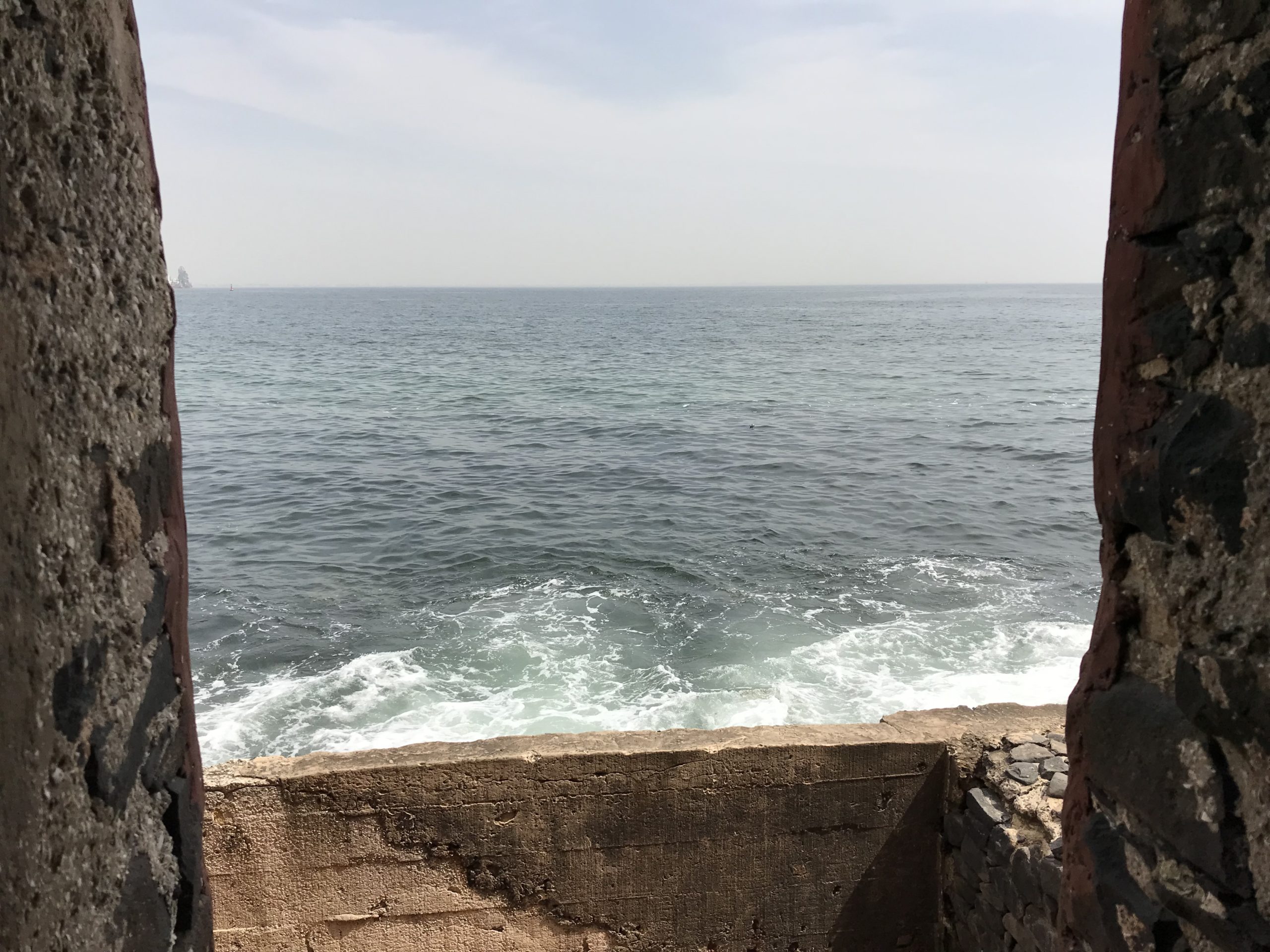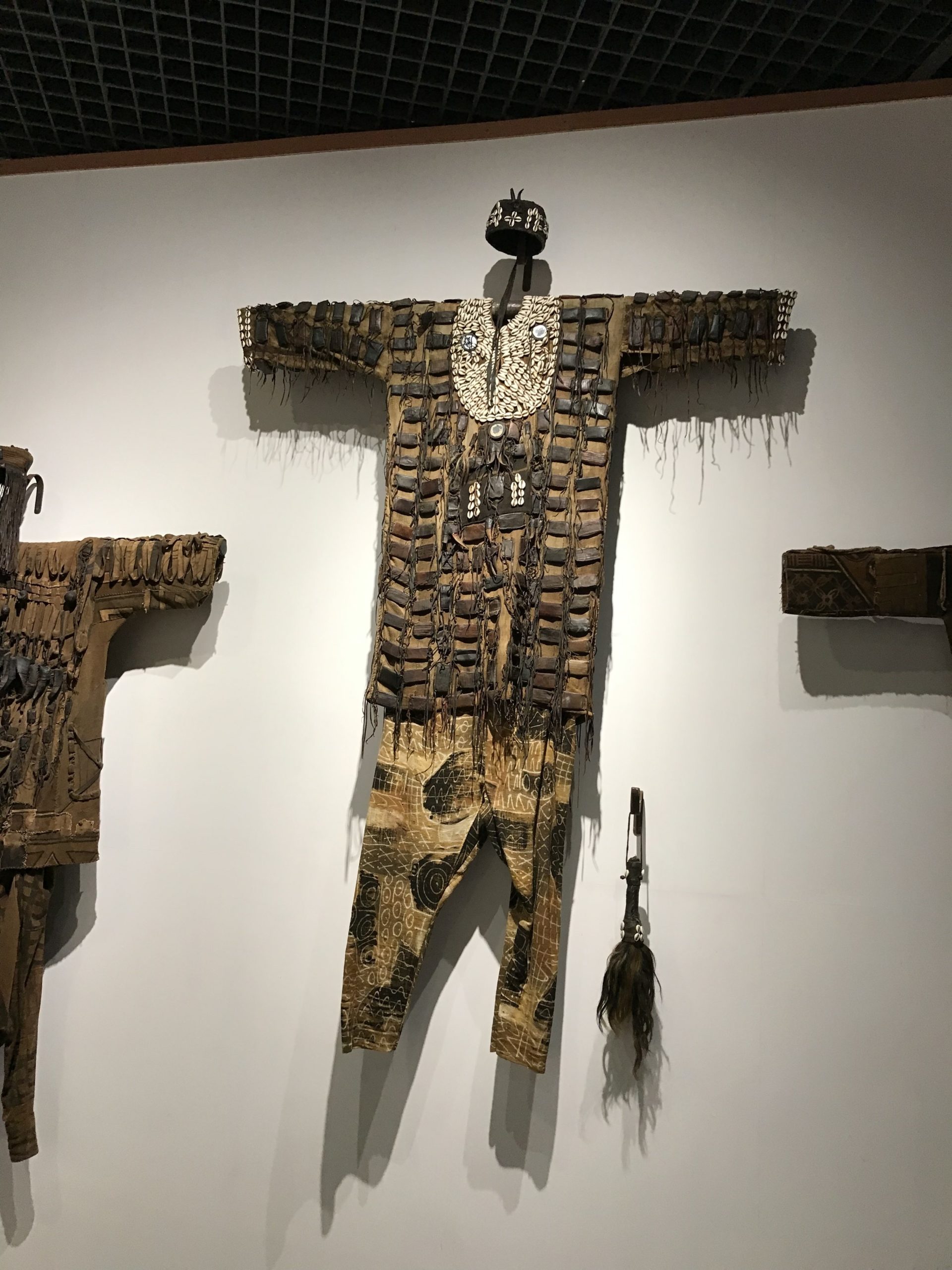
We began our second day in Dakar with a ferry trip to Goree Island, a place of truly grim history and present-day reflection. It was the largest slave-trading centre on the African coast and is a designated UNESCO World Heritage Site. The contrast between the places that housed enslaved people, and the places where enslavers lived and worked, is stark.






In the afternoon, we went back to Dakar and visited The Museum of African Civilization, a hopeful and positive counterpoint to Goree Island. The baobab tree is important here, and in the museum entrance is a giant metal sculpture of a baobab, portraying the African diaspora. Its roots signify the deep and stable connection the diaspora has to Africa, the narrowing trunk the coming together of African peoples for strength, and the spreading branches represent the diaspora itself, spreading out to all corners of the world.
Too many interesting exhibits to describe, but I’ll show a couple of items I particularly liked. The first is an ancestor statue from Nigeria, with a cape of cowrie shells, which used to be the main form of currency on the busy West African trade routes until I think the 18th century, and which still have ceremonial and spiritual significance here. The second is a traditional hunter’s tunic from the Bambara people of Mali, and again, you will see some cowrie shells.


